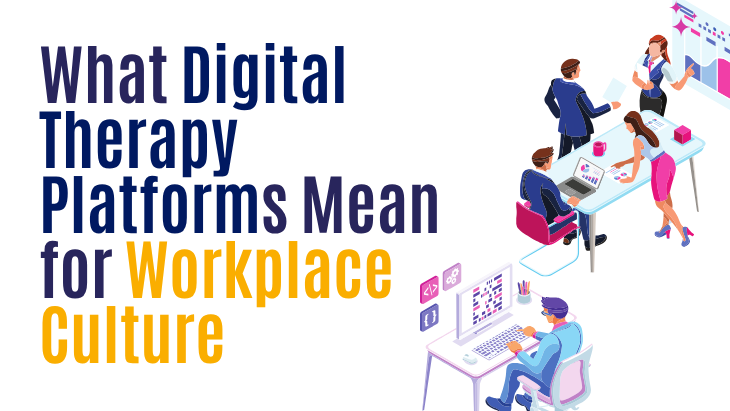Explore the dynamic impact of mentorship programs on organizational success as we delve deeper into the strategies that underpin their effectiveness. Learn how these initiatives not only foster individual development but also contribute to the overall growth of the company. Discover practical tips and insights on creating a supportive and engaging mentorship culture within your organization. From establishing clear goals to fostering meaningful connections between mentors and mentees, we'll guide you through the essential steps to ensure your mentorship program thrives. Join us on this journey of empowerment and professional enrichment, where mentorship becomes a cornerstone for achieving excellence in the workplace.
Introduction
Within the realm of professional growth, mentorship programs stand as catalysts for individual and collective success. By facilitating a one-on-one connection, mentors impart not just knowledge but invaluable insights, drawing from their wealth of experience. This personalized guidance equips mentees with a nuanced understanding of their industry, accelerating their learning curve and enhancing their skill set.
Moreover, the reciprocal nature of mentorship fosters a culture of continuous learning. Mentors find fulfillment in shaping the next generation of leaders, refining their own leadership skills in the process. This synergy contributes to a thriving workplace dynamic where knowledge flows seamlessly, creating a reservoir of collective wisdom.
In terms of employee retention, mentorship programs play a pivotal role. The emotional support and guidance provided by mentors establish a sense of belonging and loyalty, reducing turnover rates. This, in turn, cultivates a positive organizational culture where employees feel valued and invested in their professional journeys.
As organizations navigate the ever-evolving landscape of the business world, mentorship emerges as a strategic tool for adapting to change. It not only bridges generational gaps within the workforce but also serves as a means of transferring institutional knowledge. This proactive approach ensures that the organization remains agile, with a workforce that is well-equipped to meet emerging challenges.
In essence, mentorship is not just a program but a cultural cornerstone that fosters resilience, innovation, and sustained success. It is the human connection that propels individuals and organizations towards their fullest potential, creating a ripple effect of growth and achievement. As the professional landscape continues to evolve, mentorship stands resilient, providing a compass for navigating the complexities of the modern workplace.
Benefits of a Mentorship Program
A mentorship program fosters professional and personal growth by connecting individuals with seasoned mentors. It cultivates a supportive environment where knowledge and experiences are shared, enabling mentees to navigate challenges with valuable insights. Mentorship promotes skill development, accelerates career advancement, and enhances self-confidence through personalized guidance. The exchange of ideas and feedback refines decision-making abilities and broadens perspectives.
Additionally, mentors serve as role models, instilling a sense of purpose and motivation. The program builds lasting networks, facilitating collaboration and knowledge transfer. Ultimately, mentorship transcends traditional learning methods, creating a dynamic, interactive platform that empowers individuals to achieve their fullest potential in both their personal and professional endeavors.
Key Elements of a Successful Mentorship Program For Organizations
Building a successful mentorship program requires careful planning and consideration of key elements that contribute to its effectiveness. Here are essential components for organizations looking to establish a thriving mentorship initiative:
1. Clear Objectives: Define the purpose and goals of the mentorship program. Whether it's fostering career development, skill enhancement, or leadership grooming, having clear objectives helps align participants and ensures the program's relevance.
2. Targeted Participant Selection: Carefully select mentors and mentees based on their skills, experiences, and goals. Matching individuals with compatible personalities and aspirations enhances the likelihood of a productive and meaningful mentorship relationship.
3. Comprehensive Training: Provide training for both mentors and mentees to equip them with the necessary skills for effective communication, goal setting, and conflict resolution. Training ensures that participants understand their roles and responsibilities within the mentorship dynamic.
4. Defined Program Structure: Establish a structured framework for the mentorship program, including a timeline, meeting frequency, and communication guidelines. This structure adds a sense of organization and clarity, preventing ambiguity and promoting commitment.
5. Regular Monitoring and Feedback: Implement a system for tracking progress and collecting feedback from both mentors and mentees. Regular check-ins help identify any challenges early on and provide an opportunity for continuous improvement.
6. Flexibility and Adaptability: Recognize that each mentoring relationship is unique, and participants may have different needs and preferences. Build flexibility into the program to accommodate various learning styles, schedules, and communication preferences.
7. Networking Opportunities: Encourage networking beyond the mentorship pairings. Organize events, workshops, or forums where participants can connect with others in the organization, fostering a broader sense of community and collaboration.
8. Recognition and Rewards: Acknowledge and celebrate the achievements of mentors and mentees. Recognition can be a powerful motivator and reinforces the value of the mentorship program within the organization.
9. Continuous Improvement: Regularly assess the program's effectiveness and seek feedback from participants. Use this information to make data-driven improvements, ensuring that the mentorship program evolves to meet the changing needs of the organization and its members.
10. Integration with Organizational Goals: Align the mentorship program with the overall strategic goals of the organization. When the program is integrated into the broader mission, it becomes a more integral part of the company culture, increasing its impact and sustainability.
By incorporating these key elements, organizations can establish a mentorship program that not only meets the needs of participants but also contributes to the overall growth and success of the organization as a whole.
Future Trends in Mentorship Programs
As we look ahead, the future trends in mentorship programs are poised to revolutionize professional development. Technology integration is set to play a pivotal role, with the rise of virtual mentoring platforms and the incorporation of AI-driven tools. This digital transformation will transcend geographical boundaries, enabling mentorship on a global scale. Organizations are expected to adapt mentorship programs to the challenges and opportunities presented by a diversified and dispersed workforce in the era of globalization. The emphasis on adaptability and continuous learning will become even more crucial for both mentors and mentees in navigating the dynamic landscape of the modern workplace.
These trends signal a shift towards more personalized, tech-driven, and globally accessible mentorship experiences, ensuring that mentorship remains a cornerstone of professional growth in the ever-evolving corporate landscape.
Legal and Ethical Considerations
In the realm of mentorship programs, addressing legal and ethical considerations is paramount for fostering a trustworthy and secure environment. Confidentiality stands as a cornerstone, emphasizing the importance of mentors safeguarding the privacy of mentees. This ensures that shared information remains confidential, creating a foundation of trust.
Simultaneously, organizations must reinforce anti-discrimination policies, promoting diversity, equity, and inclusion within mentorship relationships. By adhering to these ethical principles, organizations demonstrate their commitment to fair and respectful practices. Striking a balance between mentor and mentee rights while upholding the organization's values ensures that mentorship remains a positive and constructive force, free from any form of discrimination or privacy breaches. These considerations not only safeguard the well-being of participants but also contribute to the overall success and credibility of the mentorship program.
Conclusion
In conclusion, establishing a thriving mentorship program demands meticulous planning, unwavering dedication, and a steadfast commitment to continuous enhancement. This article has laid out essential strategies, from defining clear objectives and fostering effective mentor-mentee pairings to embracing technology and maintaining a culture of adaptability. Through these initiatives, organizations can sculpt an environment where mentorship isn't just a program but a cornerstone of professional development. It's a journey of mutual growth, where seasoned professionals guide the next generation, creating a ripple effect of expertise and success. This deliberate investment in mentorship not only hones individual skills but also cultivates a workplace culture that values learning, collaboration, and achievement. As organizations embark on this transformative path, the ripple effect transforms into a wave, propelling both mentors and mentees towards unprecedented heights of accomplishment and fulfillment.
FAQs
Q1. How can organizations measure the success of their mentorship programs?
Organizations can measure success through key performance indicators (KPIs) such as employee satisfaction, skill development, and promotion rates among mentees. Regular feedback mechanisms also provide valuable insights.
Q2. What role does leadership support play in a successful mentorship program?
Leadership support enhances the credibility and visibility of the program, encouraging active participation. It sets a tone of importance, signaling that mentorship is valued at all levels of the organization.
Q3. How can organizations address diversity in mentorship programs?
Organizations should actively promote diversity in mentorship pairings, ensuring individuals from various backgrounds have equal opportunities. Embracing inclusivity contributes to a richer and more effective program.
Q4. What are the future trends in mentorship programs?
Future trends include increased technology integration, with virtual mentoring platforms and AI-driven tools, and adapting programs to the challenges and opportunities presented by a globalized workforce.
Q5. Why is adaptability crucial for both mentors and mentees in a mentorship program?
In a dynamic workplace, adaptability is crucial for navigating change. Both mentors and mentees should embrace continuous learning, staying updated on industry trends for long-term success.






Leave a reply